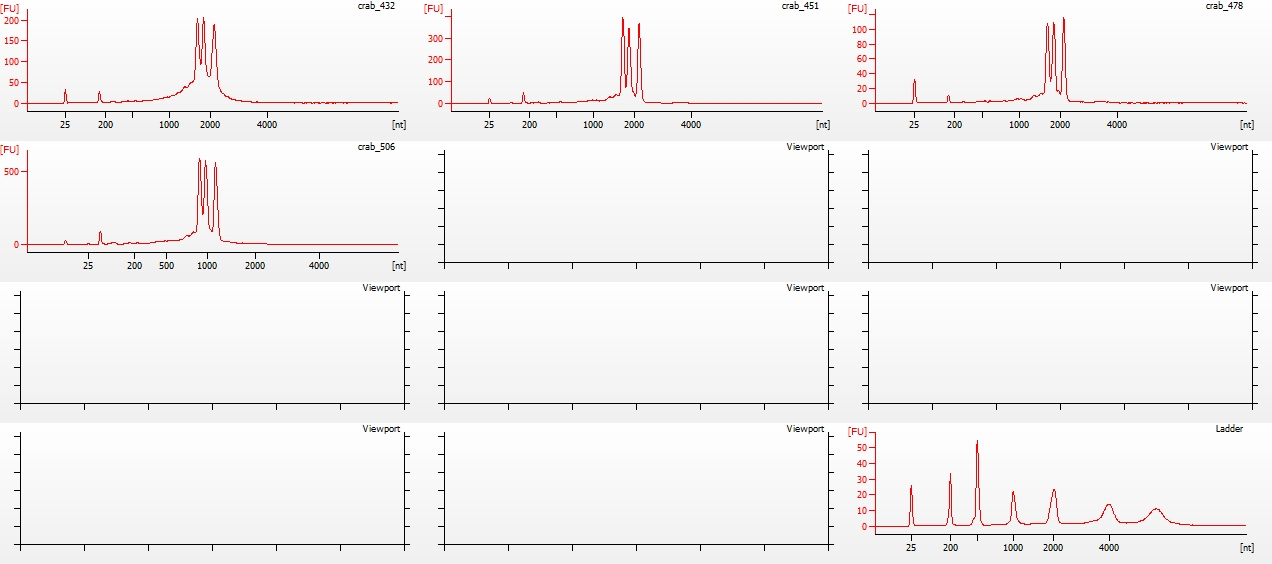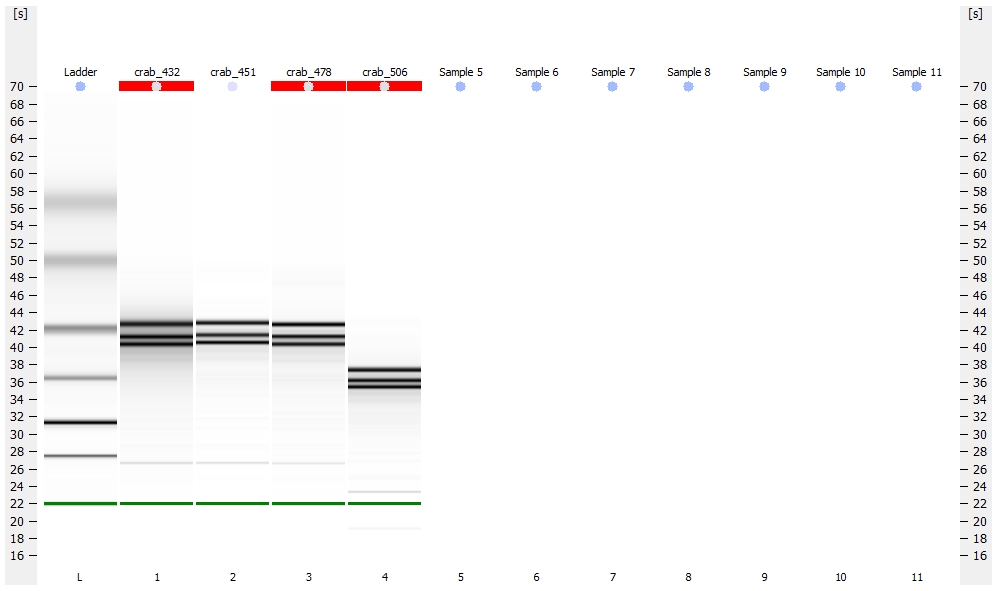Ran the four Tanner crab RNA samples that I isolated yesterday on the Seeb Lab Bioanalyzer 2100 (Agilent) using the RNA Pico 6000 Kit.
Samples were run following kit protocol:
- Chip priming station in Position C with syringe clip at top position
-
RNA denatured at 70C for 2mins and stored on ice.
-
RNA ladder aliquot was from 20160826 by Hollie Putnam.
RESULTS
Bioanalyzer data file (XAD):
ELECTROPHEROGRAMS:

GEL REPRESENATATIONS

These results look great to me. Clear, defined peaks/bands, representing ribosomal RNA.
Oddly, one sample (crab_506) appears to be shifted, relative to the other three, despite exhibiting the same peak/banding pattern. Not sure what would cause something like this; contaminants?
Regardless, we finally have clean RNA and have a usable Bioanalyzer profile to use for reference for crab RNA.
NOTE: The lanes marked with red on the gel representation image indicate that a ribosomal integrity number (RIN) could not be calculated. This is to be expected! The RIN is based on the expectation of two rRNA bands. The anomaly is sample crab_451 – a RIN was actually determined for that sample!
Will likely move forward with additional RNA isolations using the RNeasy Plus Kit (Qiagen).

















